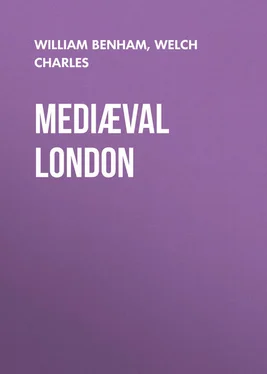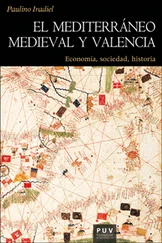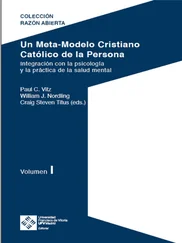William Benham - Mediæval London
Здесь есть возможность читать онлайн «William Benham - Mediæval London» — ознакомительный отрывок электронной книги совершенно бесплатно, а после прочтения отрывка купить полную версию. В некоторых случаях можно слушать аудио, скачать через торрент в формате fb2 и присутствует краткое содержание. Жанр: foreign_antique, foreign_prose, Историческая проза, на английском языке. Описание произведения, (предисловие) а так же отзывы посетителей доступны на портале библиотеки ЛибКат.
- Название:Mediæval London
- Автор:
- Жанр:
- Год:неизвестен
- ISBN:нет данных
- Рейтинг книги:5 / 5. Голосов: 1
-
Избранное:Добавить в избранное
- Отзывы:
-
Ваша оценка:
- 100
- 1
- 2
- 3
- 4
- 5
Mediæval London: краткое содержание, описание и аннотация
Предлагаем к чтению аннотацию, описание, краткое содержание или предисловие (зависит от того, что написал сам автор книги «Mediæval London»). Если вы не нашли необходимую информацию о книге — напишите в комментариях, мы постараемся отыскать её.
Mediæval London — читать онлайн ознакомительный отрывок
Ниже представлен текст книги, разбитый по страницам. Система сохранения места последней прочитанной страницы, позволяет с удобством читать онлайн бесплатно книгу «Mediæval London», без необходимости каждый раз заново искать на чём Вы остановились. Поставьте закладку, и сможете в любой момент перейти на страницу, на которой закончили чтение.
Интервал:
Закладка:
William Benham
Mediæval London
CHAPTER I
A COMPREHENSIVE SURVEY
What are the Historical Limits of “Mediæval London?” – Derivation of “London” – The Roman City – Outlying Districts – Decay of Ancient London – Renewal after the English Conquest was Complete – London Christianised – King Alfred’s London – Its Gradual Rise to Supremacy – St. Paul’s Cathedral – William the Conqueror’s London – London in the days of the Plantagenets. – Foundation of Westminster Abbey – Rebuilt by Henry III. – St. Clement Danes – Watling Street – The Folkmote Ground – Cheapside and its Surroundings – The Pageants – The Arches Court – London Wall, the Gates and Towers – City Trees – The Religious Houses – Monasteries – Priories – Colleges – Hospitals – Episcopal Residences – London Outskirts – Notes of Remarkable Events under the Successive Dynasties – Aggas’s Map of London, temp. Queen Elizabeth.
Mediæval London – it is a perfectly distinct and real subject, though it might be difficult to give exact dates of beginning and end. Historical periods glide in, and run their course, and fade away or take fresh shape. Yet we may venture to approximate, and to say with some confidence that Ancient London changed into Mediæval in the days of King Alfred, and passed into Modern with the accession of the Stuarts. The Great Fire of 1666 made vast changes not only in the city itself, but in the surroundings thereof, but modern London had begun nearly a century before that.
London is not mentioned in Cæsar’s account of Britain, but we know from Tacitus that it existed and was a place of importance. In a lecture of Dean Stanley delivered in Exeter Hall, entitled “The Study of Modern History in London,” he follows the etymology accepted in his time, and interprets the name “The City of Ships.” That derivation was disproved by Dr. Guest, and the meaning now, so far as I know, universally held by scholars is “The Fortress by the Lake.” The “lake,” so called, was the river spread out in a wide marsh on the Surrey side, and the “fortress” was a palisaded ground round the neighbourhood of the present Cannon Street Station. When the Romans took possession in the first half of the first century, they fortified it with a tower and a wall. Parts of the Roman wall are still standing; most of it remained in the days of Mediæval London. Substantial fragments of the later wall taken from around Bishopsgate are preserved in the Guildhall Museum. They include portions of handsome Roman buildings and sculptured ornaments. Evidently some, having fallen into decay, were in the course of ages used by mediæval Londoners for the repairs of their walls. And there are further remains of elaborate furniture, and other proofs of high civilised life in London. But the written history of the city during the Roman occupation is a blank. It was certainly the largest port in the country, but of written records there are none. Traditions there are of visits of Apostles and other Christian missionaries, and one church in the city has a brass plate stating that it stands on the site of the mother church of London, the foundation of King Lucius. But this is a sheer myth, King Lucius and all. That during those years of Roman dominion there were Christian congregations we may feel confident, but there are no proofs. Beyond the city were swamps and marshes on all sides. A dreary tract covered with reeds and thorns, and formed into an island by a river which came down from the hills and enclosed it by forking off into the Thames, is now occupied by the fair City of Westminster. I myself can remember when a large part of Belgravia still consisted of fields. A somewhat eccentric Hertfordshire baronet, who seconded the Reform Bill of 1832, once brought up a bag fox and a pack of hounds, and hunted him through those fields. The swamp continued all the way to Fulham on the west, and over Finsbury on the north. Beyond the marshes all round rose a region of thick, well-nigh impenetrable forest.
The departure of the Romans was followed after a brief interval by the English Conquest, and London decayed – we may even say fell into utter desolation. For her greatness had been entirely commercial; she had had large trade with the Continent, which was now broken to pieces. She had received her food from ships which came both up and down the Thames, but the poor Britons who were fighting for existence had no more to send her. The rich traders and merchants had no longer any occupation, and left their luxurious homes to find it elsewhere. And so the once flourishing London became deserted.
But when the English Conquest was accomplished, and peace for a while followed warfare, a population also reappeared in London, consisting of traders who saw the great advantages of its situation. Prosperity began to return. London became once more a city of merchants. It was again flourishing when the heathen English were converted to Christianity by Augustine, so much so that in 604 one of his companions, Mellitus, became its first bishop, Sebert being then king. Sir Walter Besant sees in the identity of the Cockney dialect (“lydy” for lady, &c.) with that of Essex, a proof that the new population were chiefly from the East Saxons.
At first the Christianising of London seemed to be a failure. Mellitus built a cathedral, but had to flee before the heathenism into which the king’s sons relapsed. The failure, however, was but temporary, and the Church became altogether triumphant. The intense sense of nationality, which has always characterised the English people, comes out in the names given to the London churches. The greater number of them were dedicated to English saints, and the names continue to this day. One of these saints – Botolph – who had endeared himself immensely to the Londoners, went forth to N.E. England and established a great mission there, and there he died. The noble tower of Boston (== Botolph’s town) preserves his memory in Lincolnshire. But the Londoners, in love and veneration to his memory, built churches bearing his name at all the four gates which led towards his burial-place; three of them still remain, and the name of the fourth survives in Botolph’s Lane, by Billingsgate.
When King Alfred had delivered the country from the Danish invaders and restored peace, he put forth his energies to strengthen London and enlarge its prosperity. It had been growing almost uninterruptedly, while it had been subject, now to one of the kingdoms of the Heptarchy, now to another. Alfred made it really the chief city of his dominion. Winchester in some respects was held to be the royal city, but London became in fact the capital of England. It was the richest and the most influential city. Under the Danes, on their second invasion, it retained its influence, and added at least two churches with Danish names, Olaf and Magnus.
Mediæval London had thus begun, but still the recorded details of its history for a while are scanty; and there are few remains of Saxon London either. The first cathedral of Mellitus, probably of wood, was burned in 961; so was its successor in a great fire of 1084. There are here and there a few Saxon churches remaining in England, such as Bradford-on-Avon in Wilts, and Corhampton in Hants. It is not to be wondered at that there is not one in London, though there were then many. Maurice, whom William the Conqueror made Bishop of London, began a new cathedral in 1086, of course in the usual Norman style, with round arches and heavy pillars, such as may still be seen in the transepts of Winchester. But two hundred years passed before it was completed, and as it was always the custom in the Middle Ages to carry on building, or to make repairs and restorations, in the style of architecture in vogue at the moment, St. Paul’s became, like nearly all our English cathedrals, a composite building, exhibiting not only Norman, but Early English and Early Decorated. This cathedral was enclosed by a wall in which were six gates. The names of two of these are preserved in the names of “Paul’s Chain” and “St. Paul’s Alley.”
Читать дальшеИнтервал:
Закладка:
Похожие книги на «Mediæval London»
Представляем Вашему вниманию похожие книги на «Mediæval London» списком для выбора. Мы отобрали схожую по названию и смыслу литературу в надежде предоставить читателям больше вариантов отыскать новые, интересные, ещё непрочитанные произведения.
Обсуждение, отзывы о книге «Mediæval London» и просто собственные мнения читателей. Оставьте ваши комментарии, напишите, что Вы думаете о произведении, его смысле или главных героях. Укажите что конкретно понравилось, а что нет, и почему Вы так считаете.












